Rugged and landlocked, Bolivia is routinely skipped by tourists in South America seeking only surf and sand or beautiful resorts. But if you’re seeking culture, authenticity, and adventure, then Bolivia is an unbelievably great destination.
Backpacking in Bolivia does come with a few challenges and it helps to plan ahead. Luckily we’re here to help set your expectations and to share the most important travel tips.
Plan your trip to Bolivia
Is Bolivia Worth Visiting?
In a word: “yes!”. Being one of the most authentic and wide-ranging countries you can visit in South America, Bolivia can surprise you in so many ways.
However, while there are so many amazing things to do in Bolivia, this country does have a few important aspects to be aware of.
Bolivia possesses a raw culture that doesn’t try to please tourists. While this can put some off, I’ve found it extremely refreshing, since you’ll be seeing the real country on a day-to-day basis.
It does also mean the infrastructure (such as accommodation and roads) will be of a lower standard than what you’re used to, but this is all part of the fun and games of backpacking Bolivia!
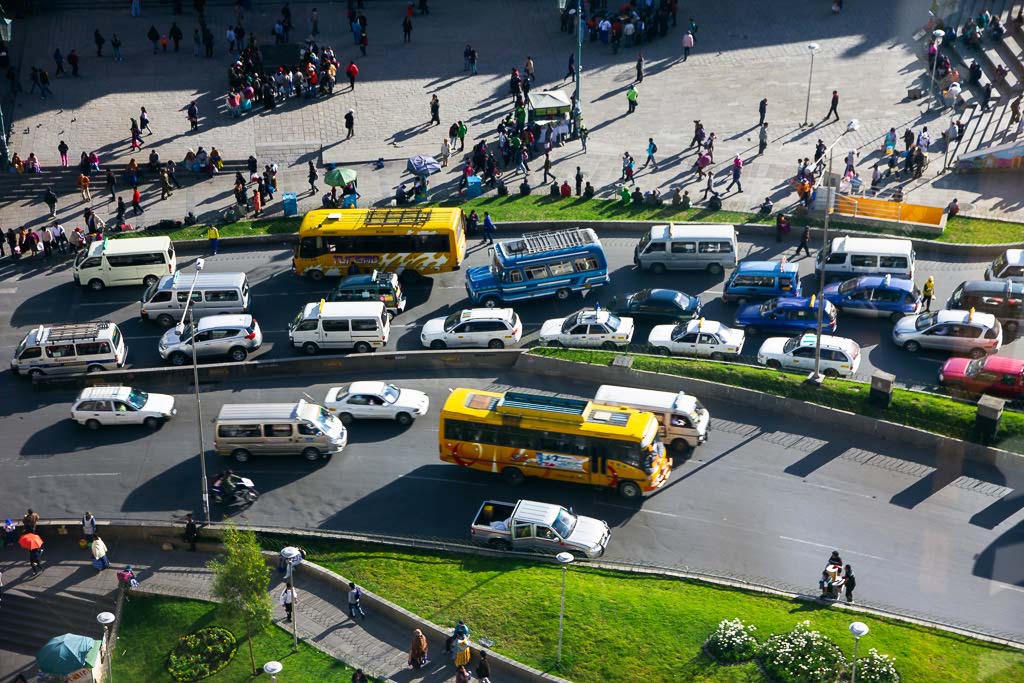
Cities like La Paz have so many fascinating things to experience, from the wild witches’ market to colonial architecture. You’ll also have the chance to try various Bolivian foods, which I feel is an underrated cuisine. Be sure to try local favorites such as Pique Macho and the quick-to-go Cuñape.
The scenery in Bolivia can also vary extremely, making it the perfect country to see a range of different climates.
In the Altiplano and Andes regions, we can find many striking mountains covered in snow year-round, which are home to many glacial lakes that you can hike to. Sweeping Lake Titicaca, bordering Peru, is the highest-altitude major lake on Earth.In stark contrast, we have the hot and humid Amazon jungle, which can either be reached via the dramatic Yungas Road (where you’ll see the mountainous landscapes shift to jungle as you descend), or from Santa Cruz de la Sierra further south.
In the jungle, you’ll find all kinds of animals such as capybaras, pink dolphins, and howler monkeys, and especially so in the Madidi National Park, which is one of the most ecologically diverse zones on the planet.
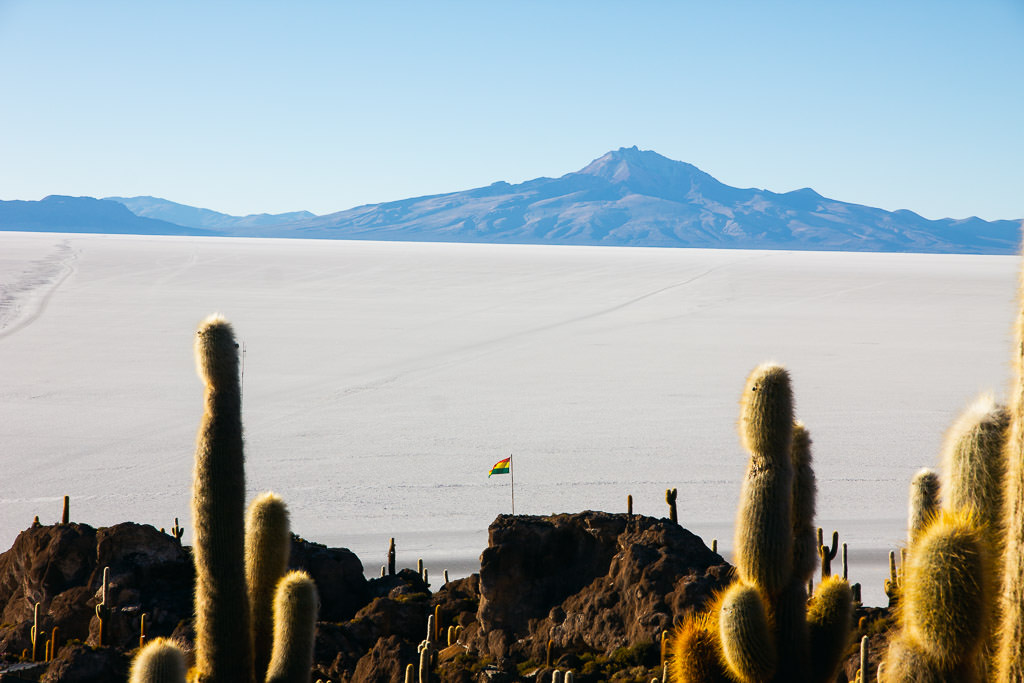
Lastly, we have the major highlight of a trip to Bolivia: the Salar de Uyuni. This giant white salt field that extends as far as the eye can see is easily one of the top attractions in all of South America. In the region around the salt flats are multi-colored lakes, remote deserts, and giant dormant volcanoes all waiting to be explored.
Given Bolivia is still not on the mainstream tourist path, be sure to keep your eyes open for some lesser-known gems. These include Rurrenabaque (the gateway into the Amazon), the breathtaking ruins of El Fuerte which is located near Samaipata, as well as having a wild local bus ride through Cochabamba!
Whether you plan to follow the classic backpacker route or wish to explore some less-visited places, my Bolivia backpacking guide will tell you everything you need to know.
Is Bolivia Cheap to Travel?
Out of all the countries I’ve traveled around in South America, Bolivia is by far the cheapest of the lot.
This is mainly due to Bolivia’s landlocked geography, which has led to a slower rate of economic development in comparison with neighbors such as Brazil, Chile, and Peru.
I recommend budgeting for roughly USD $20-25 a day when in Bolivia. This lets you stay in a nice hostel dorm bed (or even find a bargain on Airbnb), enjoy mostly local meals, and see an inexpensive tourist attraction or two.
It’s important to note that certain nations may have to pay an additional fee for a visa, which can be costly in some cases. For example, at this time of writing in 2023, US citizens have to pay $160 at the border to enter Bolivia. Be sure to check the latest visa requirements for your country to avoid surprises. (Travellers from the EU, UK, Australia/NZ, and other countries can enter without needing a formal visa or any fees.)
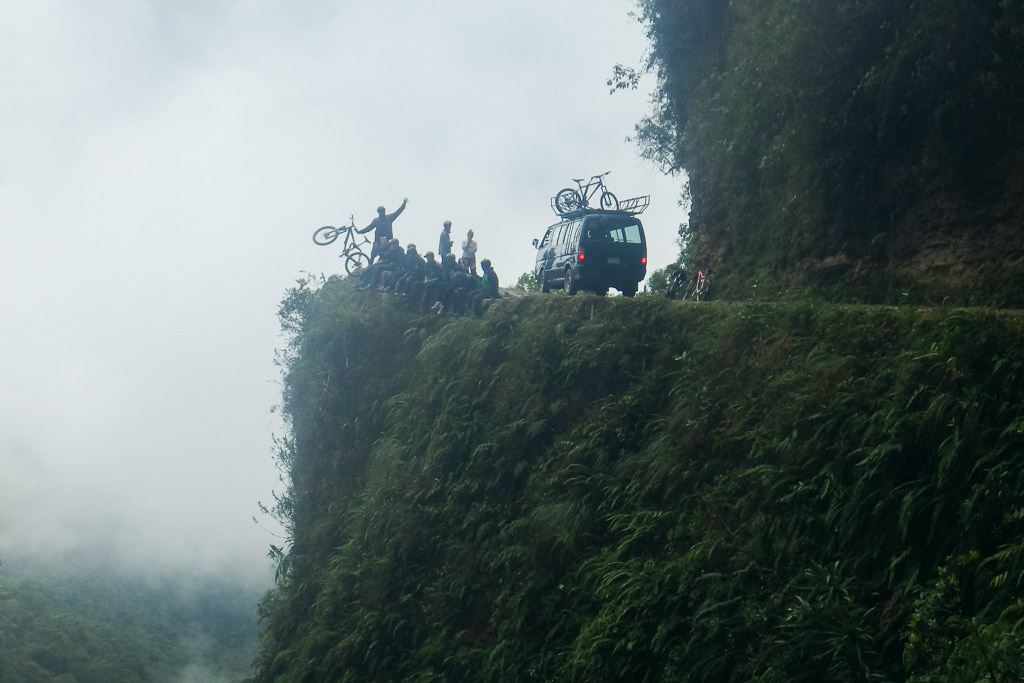
While Bolivia is a cheap country in terms of day-to-day costs, some of the most epic experiences in Bolivia are best done with qualified guides on a tour, which can raise your average expenses. This includes mountain biking down the “Death Road” (usually around $50 USD for the day) and a multi-day tour of the salt flats (around USD $250 for 3 days).
That said, food and drink are cheap, and even on a smaller budget you can eat three really filling meals with ease, so cooking your own meals is rarely worth the trouble.
While Bolivian food isn’t as tasty and memorable as other Latin cuisines, there are some dishes that are really worth trying (such as Pique Macho and Silpancho).
Accommodation spans all budget categories but is very affordable overall compared to other countries in the region.
How to see the salt flats
Since so many backpackers come to Bolivia with the salt flats first on their travel list, let us share some tips on how to get the most out of this experience.
Every Latin American country has its major must-visit attraction. In Peru it’s Machu Picchu, in Costa Rica the Monteverde Cloud Forest… and here in Bolivia, it’s the Uyuni Salt Flats.
Spanning over 10,000 square kilometers, we’ll find this giant white area covered in salt in the extreme southwest of the country. The Salar de Uyuni was once a giant prehistoric lake, which eventually dried up some 40,000 years ago and left all of its rich minerals behind.
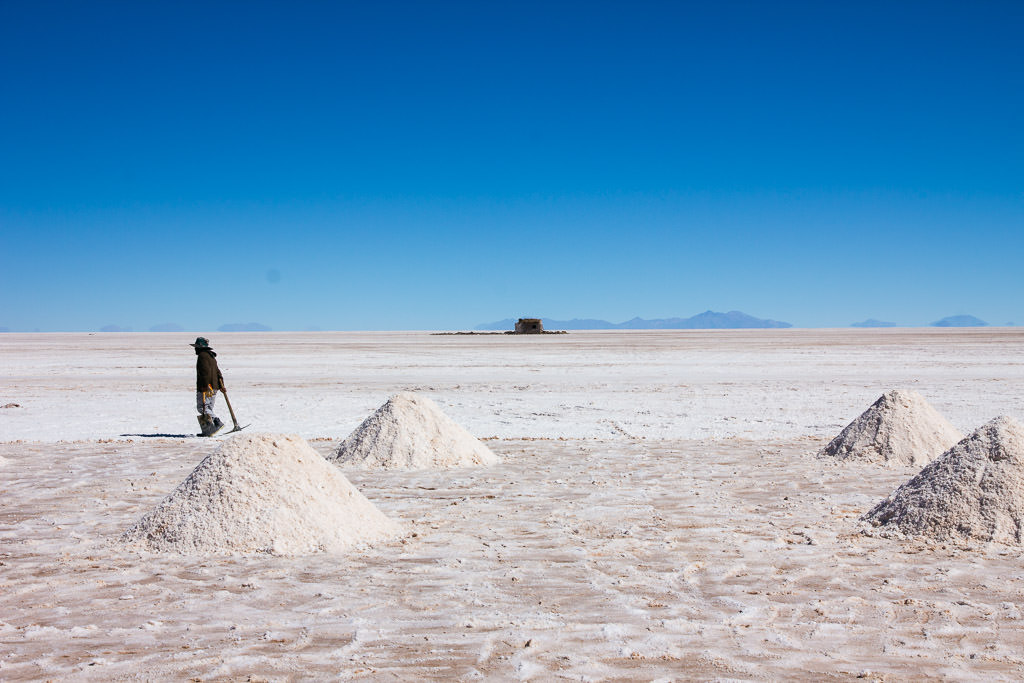
To get there you will need to first head to the town of Uyuni. From La Paz, it takes around 10 hours by bus, while those in Sucre can get there in roughly 8 hours.
You can also start a tour of the salt flats from the town of Tupiza which is some 200 km further south, which is a better option for those coming from Argentina or the nearby city of Tarija.
It is possible to visit the salt flats independently, particularly around the edges where there are occasional buses (such as to the town of Llica). However, the practical requirements of entering deeper into the protected area, as well as the remoteness and the advantages of having a good guide, make an organized tour by far the best option.
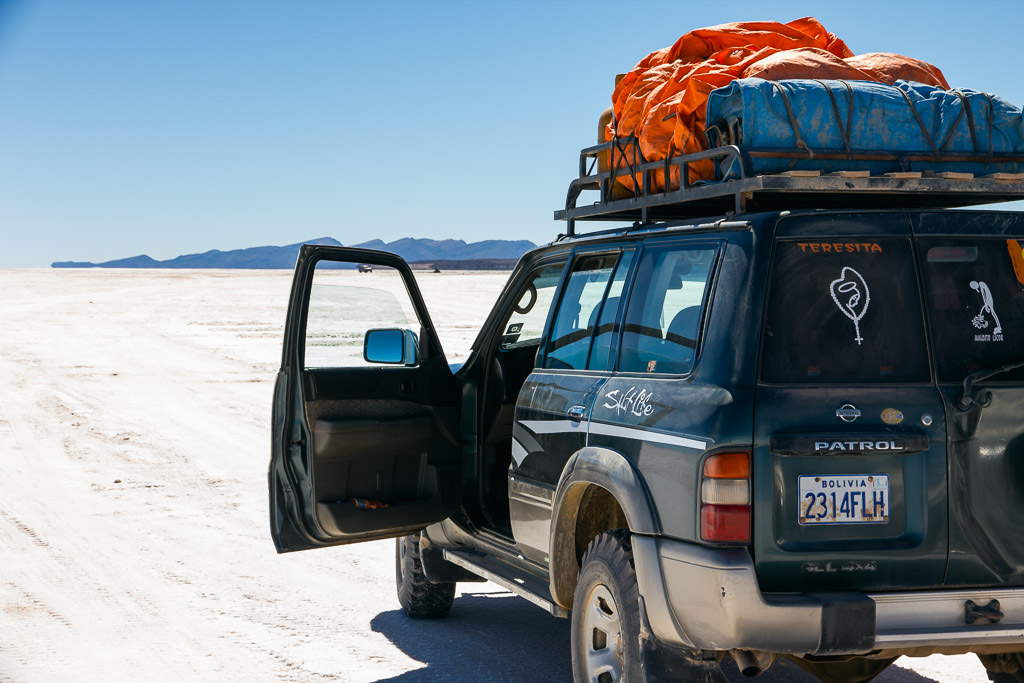
A full-day tour
A 1-day tour is the most popular option for tourists coming to visit the Uyuni Salt Flats. The tour is well-structured, so you’ll know exactly what you’ll be seeing and it’s fairly inexpensive too (typically around $60 USD).
You’ll set off in the early morning around 9:00 am and head to the Train Cemetery, which shows a unique remnant of Bolivia’s historic tin mining industry.
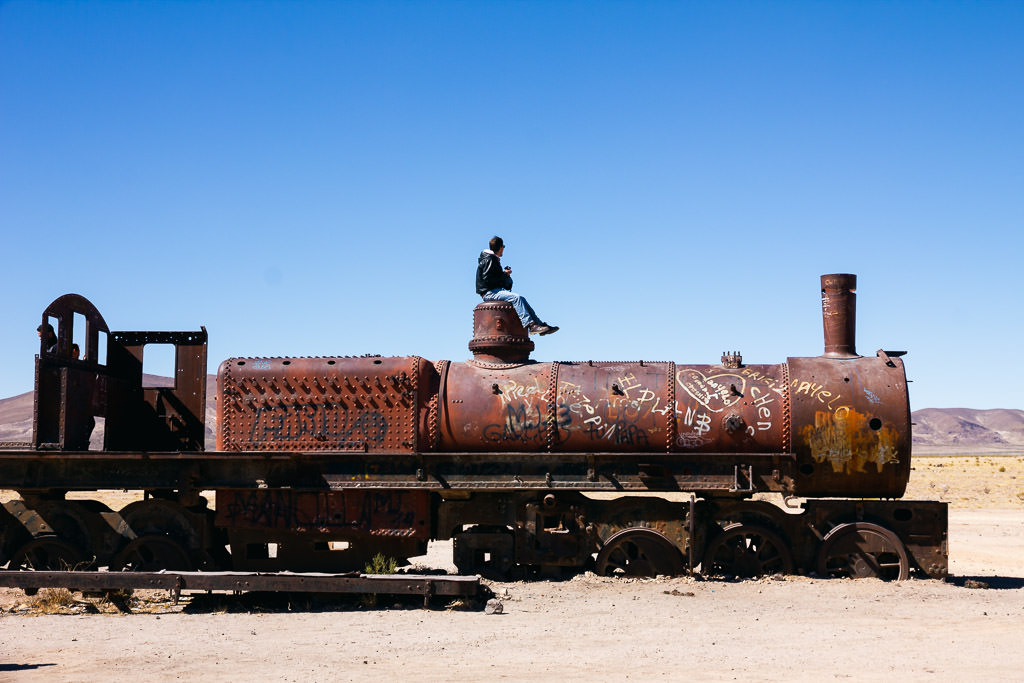
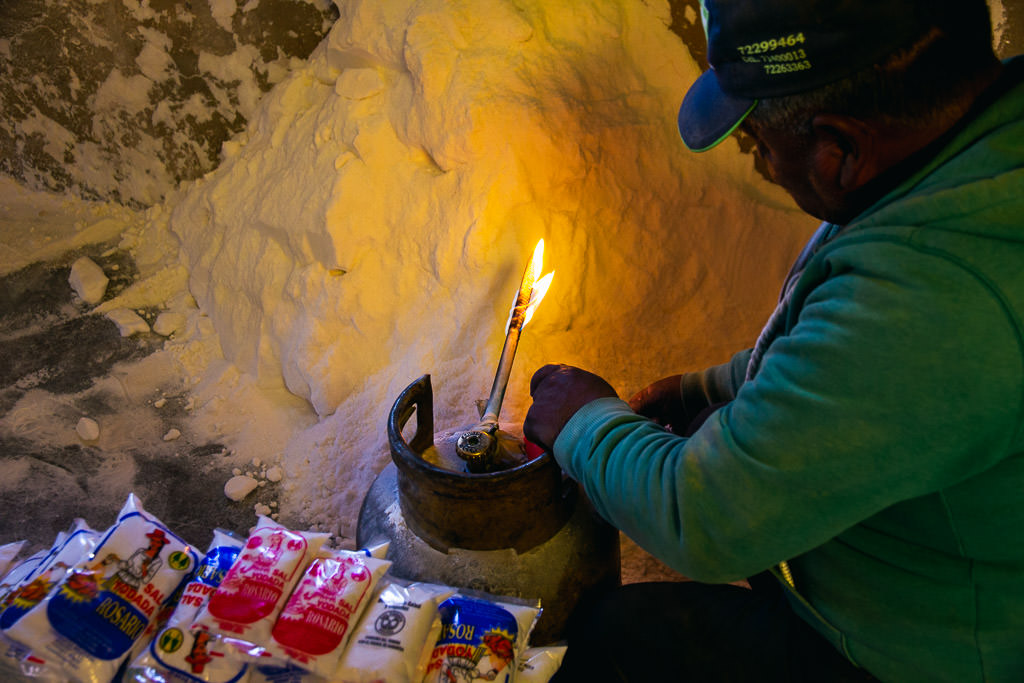
Next, you’ll visit the nearby Colchani Salt Refinery, which extracts the salt from this area for various uses.
From here, we then set off into the heart of the salt flats, where we can take many surreal forced perspective photos as well as visit the mesmerizing Incahuasi Island, which is full of hundreds-year-old cacti.
I highly recommend joining this Uyuni Salt Flats day tour, where you’ll have all transport included as well as lunch at the famous Salt Hotel, which is constructed out of salt blocks.
The one-day tour doesn’t give you access to the more remote regions and landscapes, but it’s an action-packed day with lots of highlights with little driving distance between them. However, my advice is definitely to do the more complete 3-day experience if you have the time and budget available.
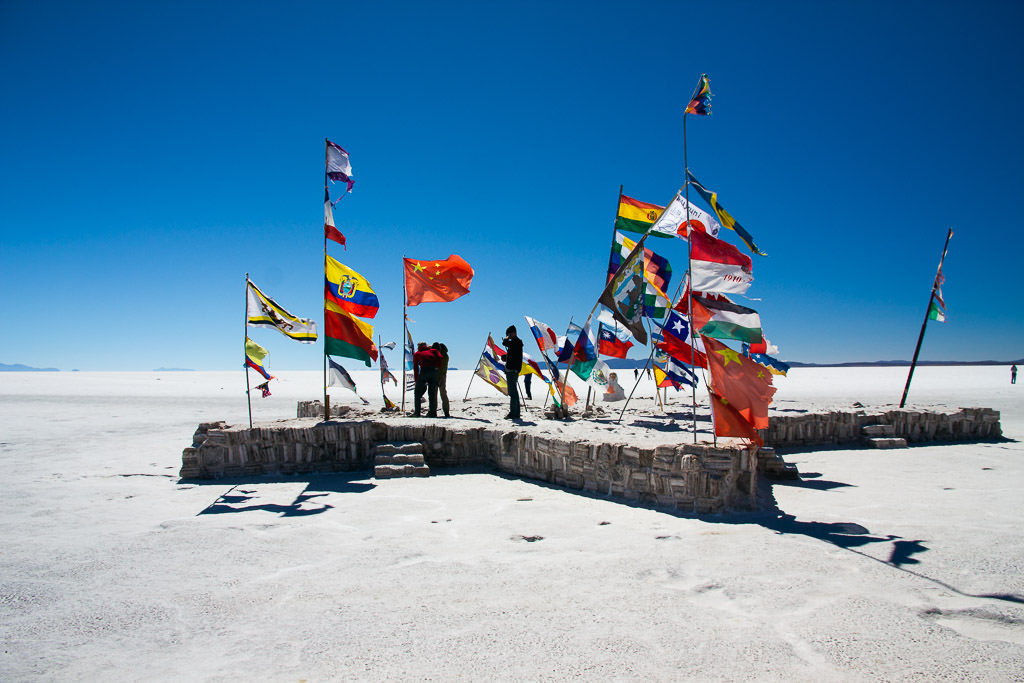
The ultimate 3-day experience
The complete 3-day tour is the option that I went for, which ended up being one of my favorite experiences in the entire two years I spent backpacking around Latin America.
I highly recommend this for the true adventurers out there. If you want to see some truly unique landscapes in a really remote area of Bolivia, you don’t want to miss this!
The exact stops or accommodations may differ a little based on the exact tour provider, but they generally follow a very similar route.

The first day of the tour will be spent the same way as you would on a full-day tour, except you’ll sleep in a hotel close to the salt flats.
On the second day, you’ll wake up early to visit the Chiguana Desert, followed by the memorable Laguna Hedionda which is filled with Pink Flamingos (you can get pretty close to them too for that epic travel shot).
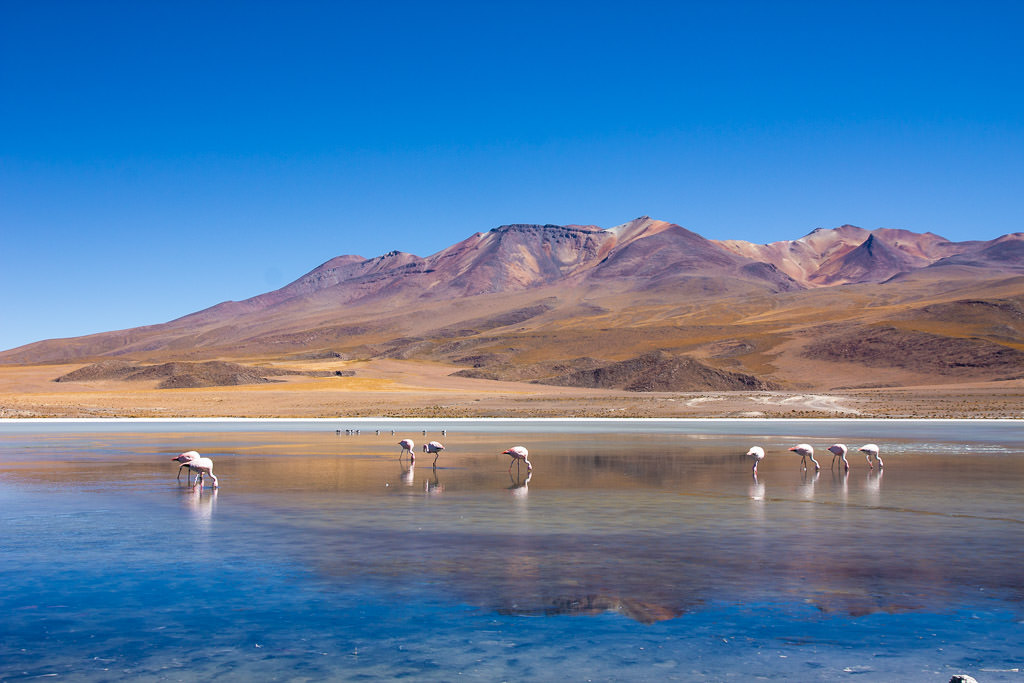
Afterward, you’ll visit various lava formations in the desert such as the Árbol de Piedra (Rock Tree), before making your way to the Red Lagoon just before sunset.
On your final day, you’ll again get to see the sunrise. This time it’s over the incredible Geysers Sol de Mañana, which is full of steaming holes and bubbling magma.
Back on the road, you’ll make a stop at the Salvador Deli Desert, before reaching the famous Green Lagoon which sits at the foot of the Licancabur Volcano (which straddles both Chile and Bolivia).
You’ll then make your way back to Uyuni, although you’ll want to stay awake in case you pass any wild Vicuña or Alpacas along the way!
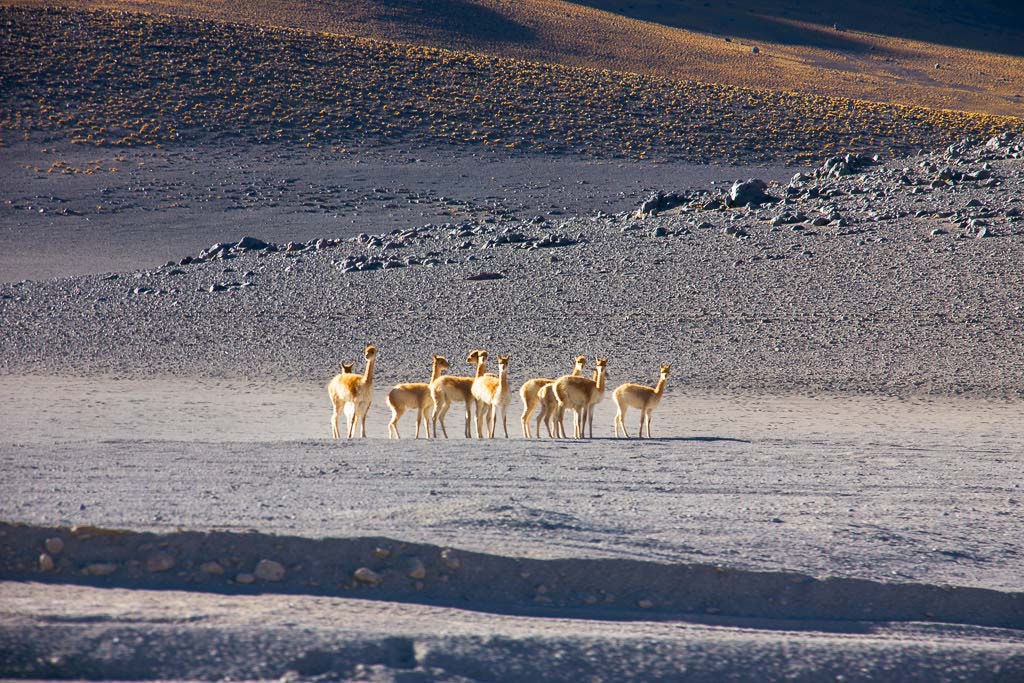
You can pre-book your spot with this high-rated tour, which includes all meals and accommodation, a professional driver, and a guide who will also take you to other hidden gems not mentioned here.
I usually try to do things independently where possible and sometimes leave booking my activities for during the trip, but given that only several companies run these tours, it’s one thing that’s highly worth pre-booking.
Tips for visiting the Uyuni Salt Flats
One of the most important things to keep in mind is the season that you will visit Uyuni.
If you want to see the infamous mirror effect (which looks like one sky painted on top of another), then you’ll want to visit during the wet season (November until March). This is when rainfall collects on the flats and creates a perfect reflection of the sky.
Just bear in mind that this season does make travel around the region more difficult, and you may miss out on seeing other destinations such as Incahuasi Island.
The dry season (from April until October) is best for seeing white salt in all directions and is a better time of year to head on the multi-day tour deeper into the region.
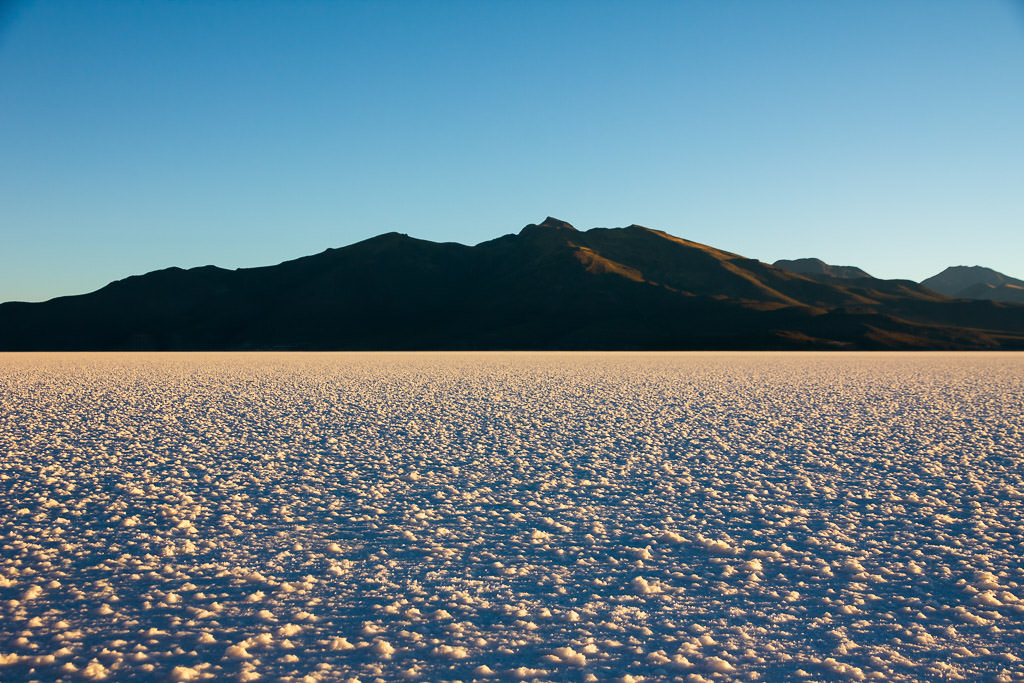
I also suggest preparing well for your Uyuni tour and packing a few essentials.
The sun can get really intense (not only does the salt reflect the light, but we’re also at high altitudes), so it’s important to bring some high-quality sunscreen and to use sunglasses regularly.
Those heading on multi-day trips through the region will also want to stock up on blankets and other warm clothes (such as gloves and hats). Temperatures regularly dip below freezing at night and you’ll have some early start times in the morning (such as to the Geysers Sol de Mañana, which are located at an altitude of 4900 meters).
Speaking of altitude, it’s also wise to bring some coca leaves or altitude sickness medications to deal with any altitude-related problems.
The Salt Flats and Atacama are quite remote places, so the accommodation during your tour won’t necessarily be luxurious. It’ll be hostel/guesthouse-style and quite basic, but given that you’re in the middle of nowhere, it’s really quite comfortable.
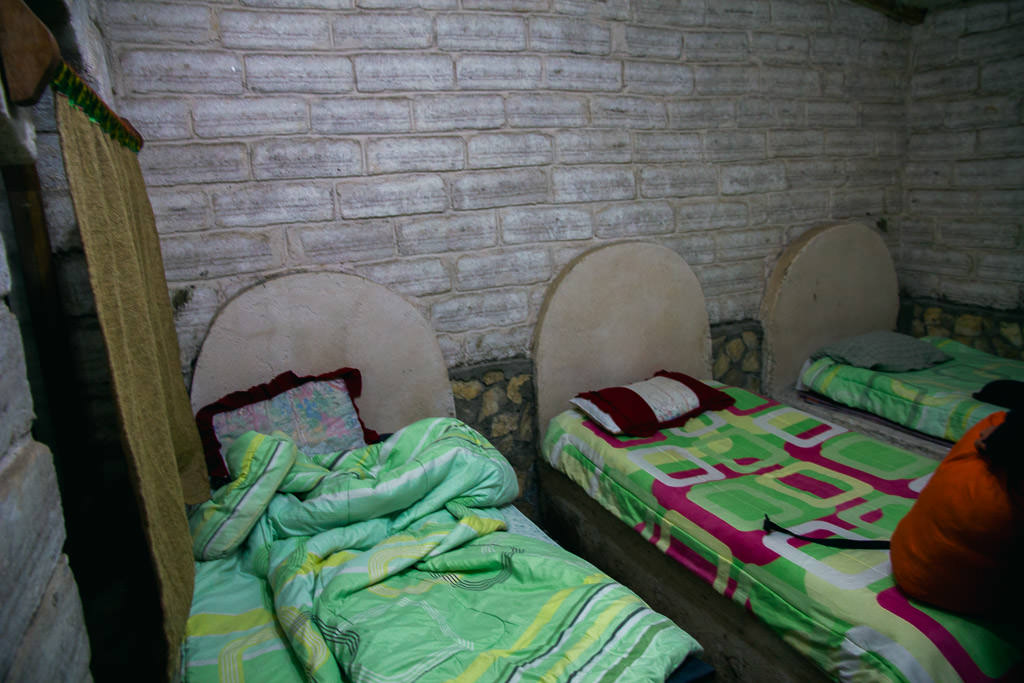
Bolivia Itineraries
The great thing about backpacking Bolivia is that you can see quite a lot in a relatively short amount of time.
The usual visa length given to foreigners upon entry is 30 Days, though you can extend this up to an extra 60 days hassle-free (you just need to visit any immigration center in Bolivia with your passport in hand).
Below I’ve created several backpacking itineraries, each with its own advantages depending on how much time you have and what you’ll want to see.
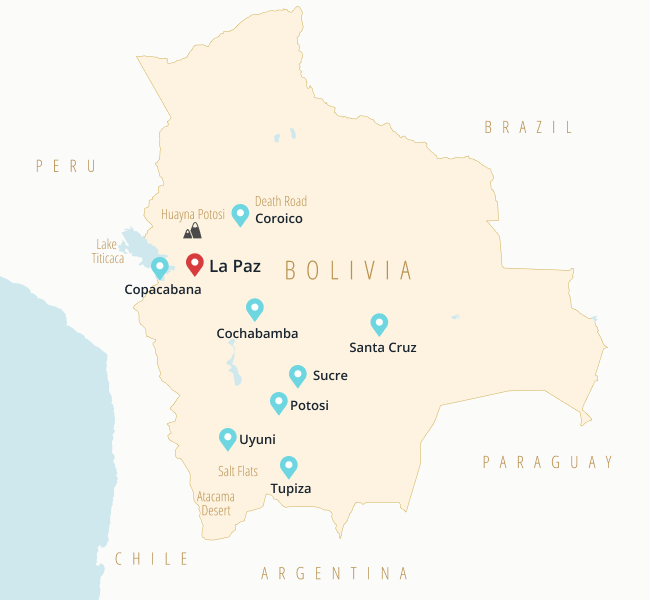
1 week in Bolivia (a Peru trip add-on)
Many travelers enter Bolivia after having traveled through Peru, given it’s an easy hop to make across the border.
Those who head here from Peru will have most likely already seen many awesome landscapes (such as the Sacred Valley, Arequipa, and Huacachina), so will probably just want to fit in the highlights of Bolivia.
There are two main border crossing points. The first is Desaguadero which is directly on the road to La Paz, but I personally recommend the Kasani crossing which I have done several times. Here you’ll enter Bolivia via Copacabana, a town that lies on the southern shores of Lake Titicaca.
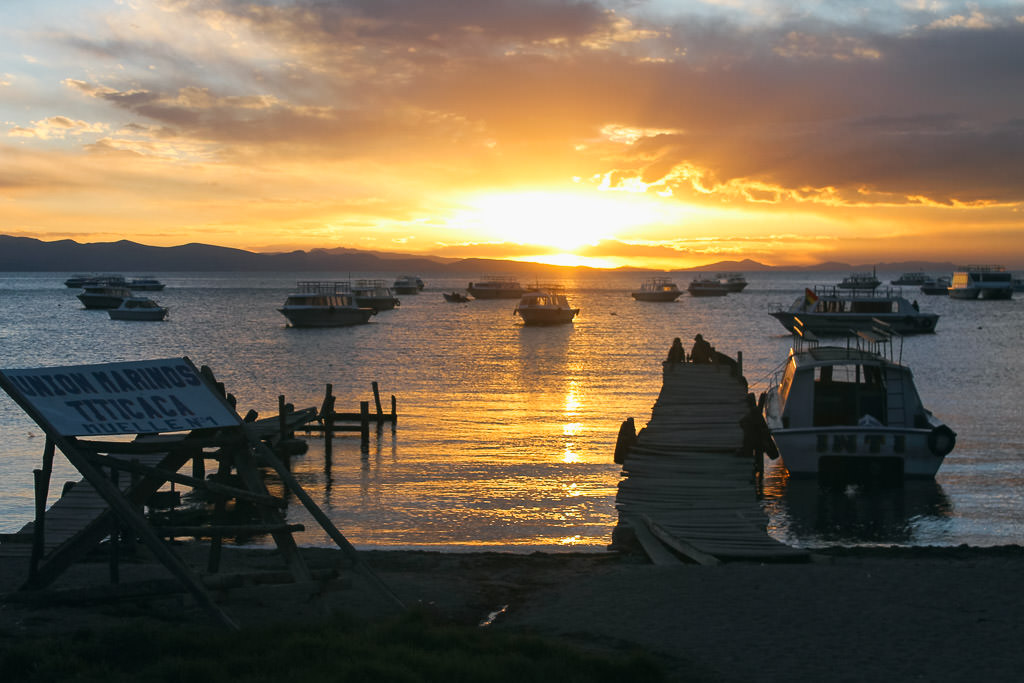
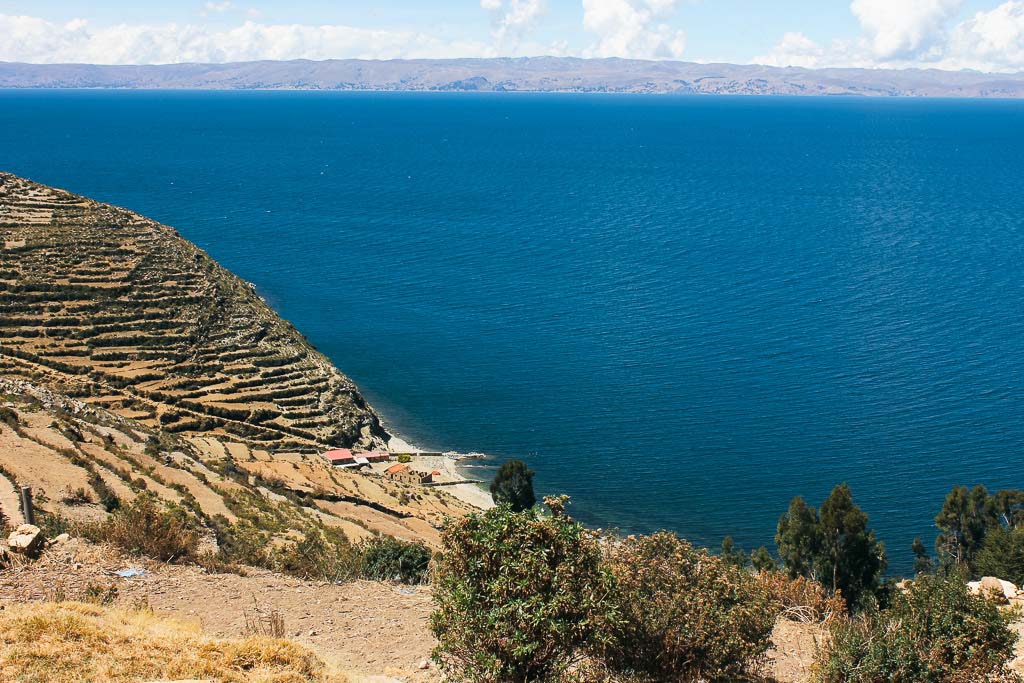
I recommend spending 2-3 days here. You can take a boat trip out to Isla del Sol as well as climb the Cerro Calvario for some impressive sunset views over the lake.
From here we can take an overnight bus to Uyuni, which is home to the impressive Salt Flats. Given it’s the biggest highlight of a trip to Bolivia, it’s a good idea to book your tour in advance.
If you can I suggest heading on the multi-day trip, as there’s much more to see aside from this mesmerizing giant white landmass. You can also visit a red lagoon, get up and close with Pink Flamingos, and head through some epic remote deserts.
1 Month in Bolivia
Are you looking to see everything that Bolivia has to offer? Then I would recommend planning a minimum of 1 month.
Starting your trip in La Paz is a good idea, given the airport here is well-connected to other cities in Latin America (particularly in Peru, Colombia, or Chile), although it’s lacking in flights to other continents.
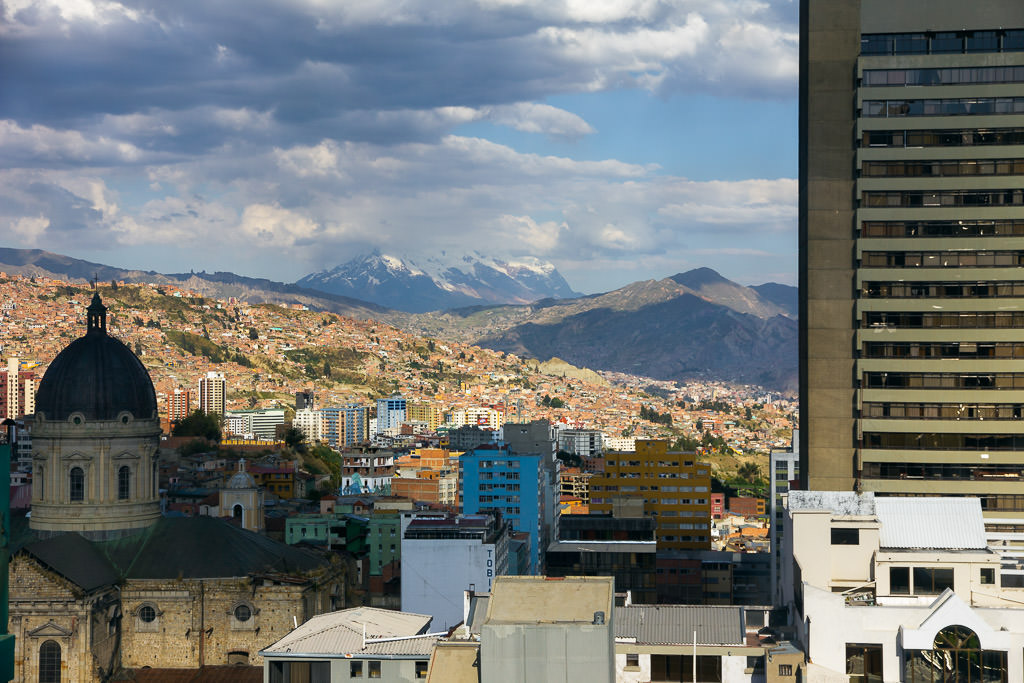
I would recommend spending 5-6 days in La Paz, as there’s quite a lot to see and do. This includes getting to know the city highlights such as El Mercado de las Brujas, as well as walking along the quirky Calle Jaén which is full of colorful colonial buildings.
There are also many memorable day trips to take from the capital. This includes visiting the alpine lake of Charquini, as well as riding a bike down El Yungas Road (which is known as the world’s most dangerous road – a must for any adrenaline junkie!).
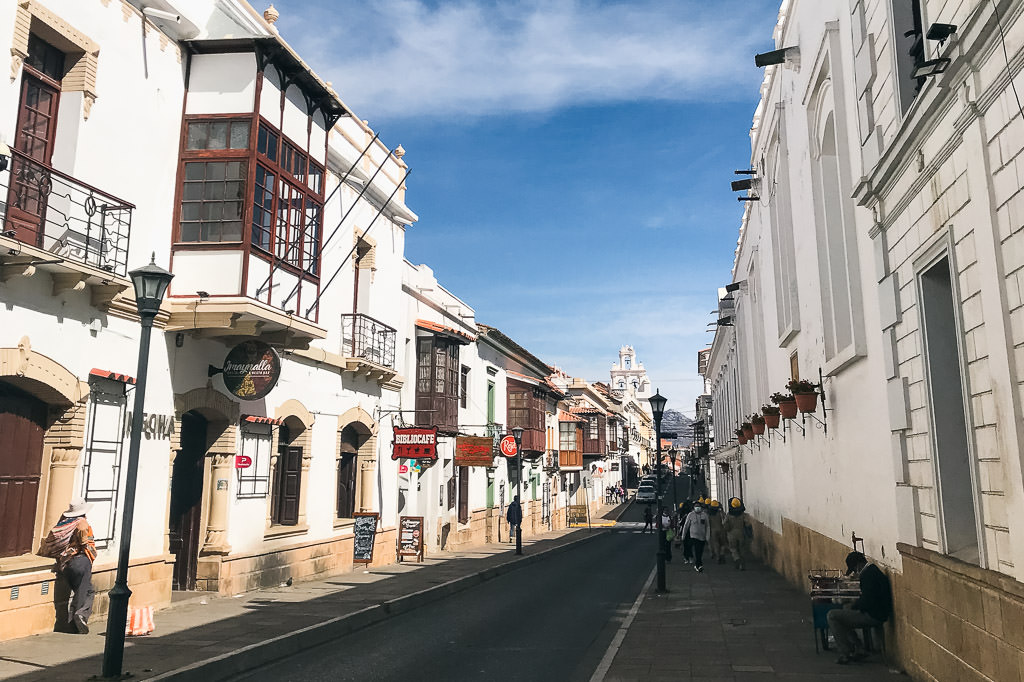
From La Paz, we can then head to Sucre, which is a beautiful city in the south known for its incredible white architecture. It’s worth spending around 4 days and visit the mirador of La Recoleta as well as the Templo de San Felipe Neri. Just outside of the city lies the Parque Cretáceo, which is an area with over 5000 visible dinosaur footprints.
From here there are several other smaller destinations worth adding to your trip. This includes Potosí (3 Days) which is home to the Cerro Rico mine, Uyuni (3 Days) for the salt flats, Santa Cruz de la Sierra for its warm climate and proximity to the Parque Nacional Amboró, as well as the must-visit Lake Titicaca (4 Days).
For more trip ideas, you can check out these 19 amazing experiences in Bolivia.
Getting off the beaten path in Bolivia
If you want to get really into the heart of Bolivia, you’ll find there are even more unique destinations to visit.
One of my absolute favorites has to be Rurrenabaque, which is a jungle town in northern Bolivia. While more popular nowadays, it’s the gateway to the Madidi National Park which is one of the most biodiverse areas on Earth. Here we can see all kinds of mammals and insects, including tarantulas, and howler monkeys, and the jungles are even home to jaguars. You can also camp out in the deep jungle, which is especially surreal at night.
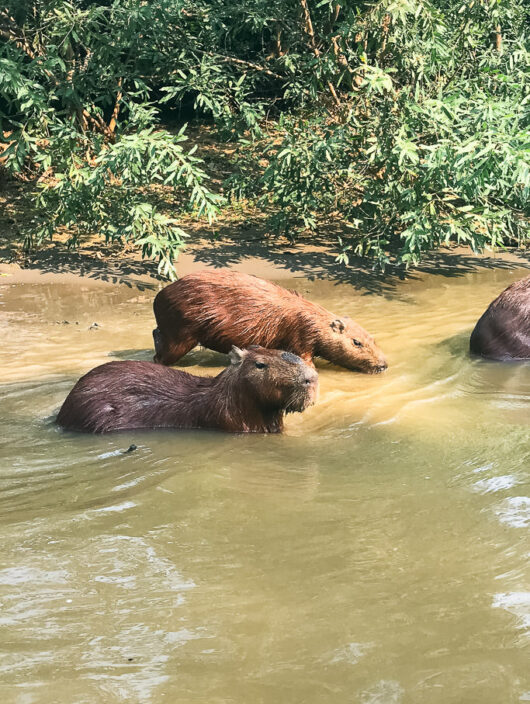

The other must-visit area here is the Pampas, which is best for spotting wildlife. On a tour you can see everything from capybaras and crocodiles to piranhas, pink dolphins and coati. To get to Rurrenabaque you will need to fly from La Paz, or take the dramatic 13-hour bus ride.
Cochabamba is a great city for seeing authentic Bolivian culture, where you can also take the gondola up to the Cristo de la Concordia as well as snack on tasty Salteñas.
Those after a relaxed mountain town will love Samaipata, which is just a 3-hour bus ride from Santa Cruz de la Sierra. Here we can visit the picturesque El Fuerte Ruins (which are one of the most important in Bolivia), as well as go for a dip in the jungle waterfalls of Las Cuevas.
Get insurance for your trip
Travel Advice
Travel insurance will cover you for theft, medical expenses, cancellation, and more. Heymondo offers great coverage, no excess or deductibles, and an app with 24/7 assistance & doctor chat.
5% Off With Indie Traveller
How to Get Around Bolivia
Traveling within Bolivia is quite inexpensive, but it’s important to lower your expectations of service and bus quality when compared with its South American neighbors. Poorly-maintained roads and complicated terrains are often issues as well.
We can find various flotas (large buses) that travel throughout the country, which can vary in price depending on the quality you select. For example, the 13-hour bus from La Paz to Rurrenabaque costs around 70 Bolivianos (about $10 USD), whilst the 6-hour ride from Sucre to Uyuni costs around 90 Bolivianos.
Booking bus tickets is relatively simple. It’s actually easiest to go to the terminal the same day (or the day before if you’re on a strict schedule) and book your ticket in advance. You can also book online on sites such as Tickets Bolivia, though they will only show the more exclusive bus companies as well as limited schedules.
If possible, I highly recommend being flexible with your travel times. By heading to the bus terminal and catching the next departing bus to your destination, you can save up to 40% on the original ticket price as the companies look to sell off any remaining seats.
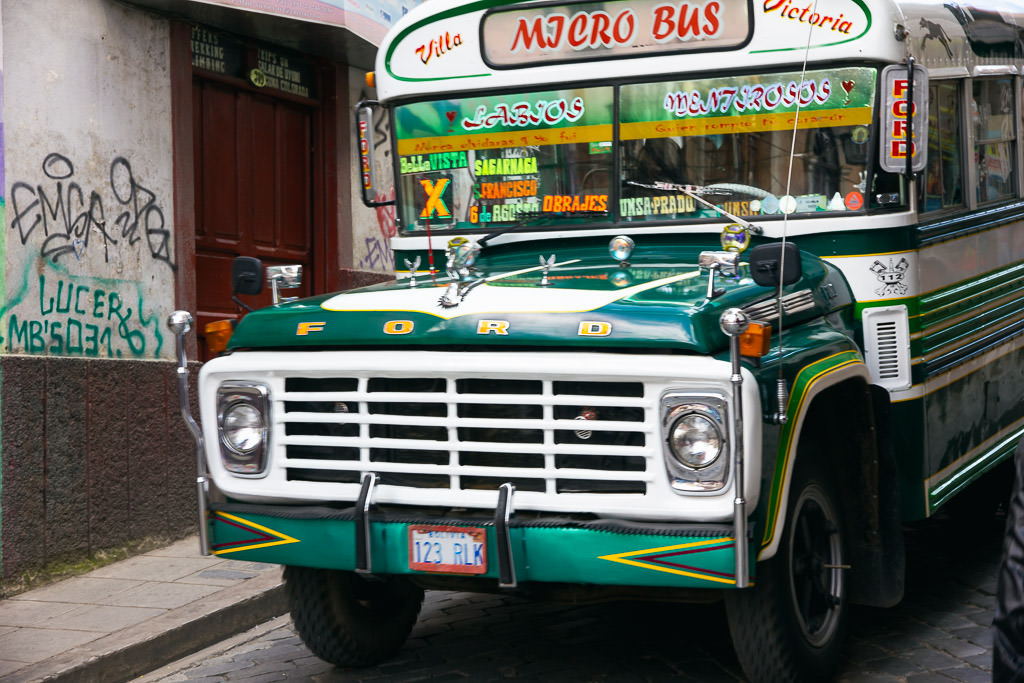
Within cities and destinations, there are also multiple ways to get around. Using taxis is fine, although I’d recommend Ubers more. They’re safer and you’ll pay the same rate as locals do (unlike taxi drivers who may sometimes hike up prices for foreigners).
There are also the local colectivos (informally known as chicken buses) that run riot on the streets, which are both a super cheap and efficient way of getting around. It will help a lot to know some basic Spanish here, as the local bus scene in Bolivia is quite a hectic and fast-paced environment where you’ll need to think on your feet (they stop and start driving quickly, all kinds of cargo being added etc). It’s best to have your money ready, and usually local city rides will cost anywhere from 2 to 7 Bolivianos.
Some links may be affiliate links, meaning I may earn commission from products or services I recommend. For more, see site policies.
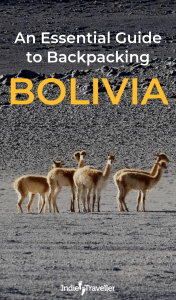
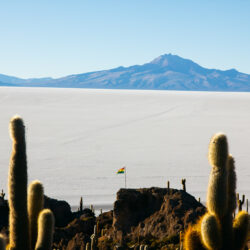

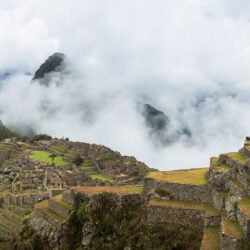




Hi Marek, we’ve been trying to plan our trip from Peru to Bolivia but we don’t seem to be lucky with finding a way of transport. How did you travel? Did you use buses? Or is it better to fly between places and then book local tours? Advice would be much appreciated.
Hey Beata. I’ve always used buses/coaches. The thing is, you typically won’t find them online and you usually can’t book them online. But locally it’s easy to book buses, for instance from Arequipa or Puno to La Paz. Flights can be expensive (budget airlines are not as much of a thing in SA)
Love the info. So I have about 6 days, that’s including the flight in/out. In what city should I be landing in and out if I want to do the flat salt tour? And do you think I would have time for any other adventure?
Check where there’s flights to… my guess eiter to la paz or santa cruz. Maybe do the 1 or 2 day tour and spend some time in Sucre on the way back. It will be a tight itinerary
Hello Marek! What an amazing post! Thank you! I’m thinking about going to Bolivia alone for about ten days middle/end of August. I’ll be flying from Buenos Aires and I’ve noticed that from there, there are only direct flights to Santa Cruz. Considering that I would like to visit as many different landscapes as possible (including the junjle, the salary and the Titicaca lake) and also to experience the indigenous culture, what kind of itinerary would you recommend? Would you do SAnta Cruz-Sucre-Ujuni- titicaca – La Paz and then fly back yo Santa Cruz or the opposite or would you find a different solution? thank you so much
Sounds like a great itinerary. I don’t know of any particular (did)advantages to doing things in a certain order. All I can think of is maybe putting Sucre later as it’s quite a relaxed and pleasant place and nice to stay after some more intense adventuring.
Hi Mark,
Thanks for such a helpful post! I’m planning my trip to Bolivia, Peru, and Colombia this summer. Is it necessary to book tours ahead of time or it’s available when you get there? I’m trying to plan as much as I can but at the same time want to keep things loose in case things don’t work out.
Hi Tram. Only really famous stuff like doing the Inca Trail in Peru (this needs permits long in advance). Other than that everything can be booked pretty easily when you get there…
Hello Marek, first of all, thank you for everything you post here. I admire your work and your tips are always accurate.
Do you know where I can get that survival course in bolivia??
Thank you!
Hey Felipe. I don’t remember the company that guy used but I’m willing to bet it was Max Adventures.
Hey:)
what a wonderful blog and so interesting to read! thanks for sharing all these information!
I’m planning to travel through Chile, Bolivia, Peru and Colombia. From your experience, do you think I’m getting around (save) alone, and without Spanish language skills?
I’ll probably have to skip one country… which of those did you enjoy the most? hard question…I know 🙂
Hey Linda. It’s not too difficult to get by without Spanish. It’s good to know some phrases (for navigating bus stations etc.) and most receptionists at hostels/guesthouses do speak some English. Bring a phrasebook and you’ll be OK. It is limiting though when dealing with any kind of guides as the vast majority only speak Spanish.
Lots of travelers are solo in these parts (including solo women). It’s safe if you take reasonable care. In cities at night it’s a good idea to take trusted taxis (have your accommodation call them) and you can also team up with other (solo-) travellers.
I most enjoyed Bolivia and Colombia!
This is such a fabulous read! Thank you so much. Do you have any recommendations in terms of when to visit Bolivia? I was planning to make a trip in November, but wasn’t sure what the best season is. Any advice would be much appreciated!
It’s hard to say! I was there in the winter months – May/June if I recall correctly. In Potosi and Uyuni it was colder than a witches’ tit, especially due to limited heating, but it was interesting. November will be warmer but is also the start of the rainy season. But my understanding is that Bolivia is worth it any time of year.
Hello and thx a lot for this quite cool blog/post.
I would like to know, whether I can buy and register a dirtbike in bolivia and do most of the rides by myself, like up to Lima for example. Is this possible at all ?
THX in advance.
Hey Rob. Buying a bike is not a problem, just keep in mind any paperwork as the border. I don’t have the best info on this but maybe http://www.drivetheamericas.com has some answers (check their forums).
Thank you…
This is really useful thank you for all your detailed information. I am looking to travel to South America for 3 months next year and Bolivia will be one of the countries we intend to visit. How long would you suggest staying in Bolivia? We will also be going to Colombia, Peru, Bolivia and Brazil.
I think you can see most of the major highlights in Bolivia in, say, 20 days or so (including things like a 3-day Uyuni tour, etc.). I stayed a lot longer but most of that was in Sucre while taking Spanish classes.
thanks for this! I was just wondering which package from Red planet you took?
Hey Lauren. I did the 3 day package. If you have the time available, I recommend it!
Thanks! You wouldn’t be able to remember how much it was would you? I can’t seem to find it quoted on their website.
Sorry no, I don’t remember!
Good info!
Ps. Atacama Desert is not in Bolivia. It is in Chile, you can go from the uyuni salt flats but you have to cross the border.
It stretches across both Chile and Bolivia. 🙂
Cheers! What an amazing and helpful this was! Ill go to bolivia in lie a week so thank you so much!!
Glad it was useful! Enjoy Bolivia 🙂
Excellent read!! This is by far the most thorough I’ve read. I’m traveling to Bolivia in the next few months and this article really helped.
Thanks!
This is really helpful and informative! Thanks
Wow, thank you SO much. This is literally perfect… I have been looking into South America and Bolivia was only slightly on my radar because there wasn’t that much advice on how to ‘do it’, now it’s definitely on the list, and I feel so much more prepared! Ahhhh lifesaver 🙂